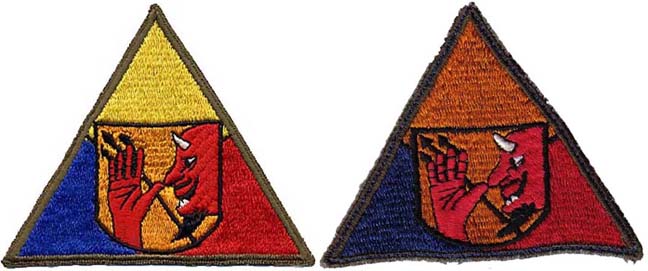|
|
Reproductions & Fakes
The 3133rd Signal Service Company Patch by Dave Kaufman © by author 2007
|
|
|
The
3133rd Signal Service Company, and its sister company, the
3132nd, were formed at the Army Experimental Station at Pine
Camp, NY, in 1944. These two companies shared the distinction of being
the Army’s only two active “sonic deception” units of WWII (a
third company was in training when the war ended).
The function of the sonic deception units, as the name implies,
was to deceive the enemy by generating sounds that mimicked troop and
equipment movement and activities.
The 3133rd served in Italy as part of II Corps; the
3132nd in France and Luxembourg as part of 23rd
Special Troops. Reportedly,
the members of these two units were sworn to secrecy regarding their
activities for a period of 50 years. Given the fact the 3133rd was small and its patch rare (the unit’s size was probably about that of the 3132nd, which comprised 8 officers and 137 EM1), it will come as no surprise that a reproduction of the patch exists. In fact, the person responsible for reproducing the 3133rd patch is also responsible for reproducing the 802nd TD patch, discussed elsewhere on this site, and he is quite proud of both.2 But while his products are good, they are not perfect.
The
patch of the 3133rd Signal Service Company: Genuine patch on
the left; reproduction on the right. The design of the patch employs a central field, depicting the devil thumbing his nose, superimposed on a standard, triangular Armor patch, which is divided into three fields. The salient difference between the genuine patch and the reproduction is that the background color of the central field and the top field are the same (orange) on the reproduction but different (central field orange; top field yellow) on the genuine patch. There are other differences. (1) The central field is slightly taller than it is broad on the genuine patch, whereas just the opposite is true of the reproduction. (2) The bottom of the central field extends to the bottom border of the genuine example but fails to do so on the reproduction. Despite this, the red and blue fields are divided equally below the central field of the reproduction, while red extends slightly into the blue field of the genuine patch. (3) The reproductions exhibit a waviness that extends to the edge of the patch (most noticeable near the bottom border), and they tend to appear (from attached threads) as if they had been removed from a uniform. (4) The features of the devil's head are coarser on the reproduction. (5) The goatee is pointed on the genuine patch; rounded on the reproduction. (6) The moustache curves upward, away from the mouth, on the genuine patch; downward, toward the mouth, on the reproduction. (7) Each finger of the devils' hand on the reproduction exhibits two distinct horizontal lines (where the joints flex), while on the fingers on the genuine patch these lines are either less distinct or missing. (8) It appears that the reproduction was manufactured to look German-made, whereas the originals were US-made. The
genuine example illustrated here came from a veteran of the unit who
stated that it was issued to him. 1.
Official
History of the 23rd Headquarters Special Troops. 2 These were among the patches of several units reproduced, in the 1970s, by the same individual, who took pride in their quality duping many collectors.
|

